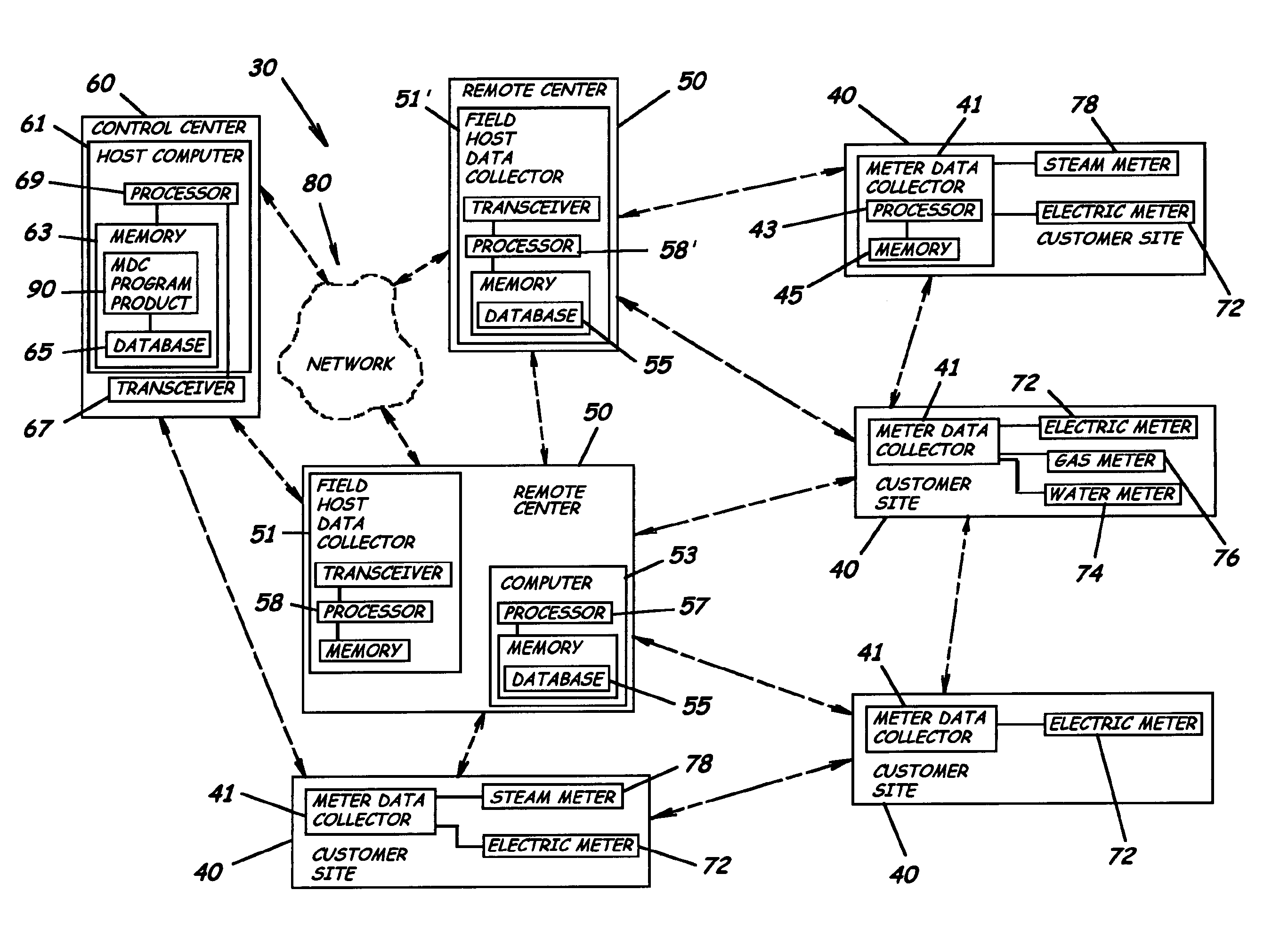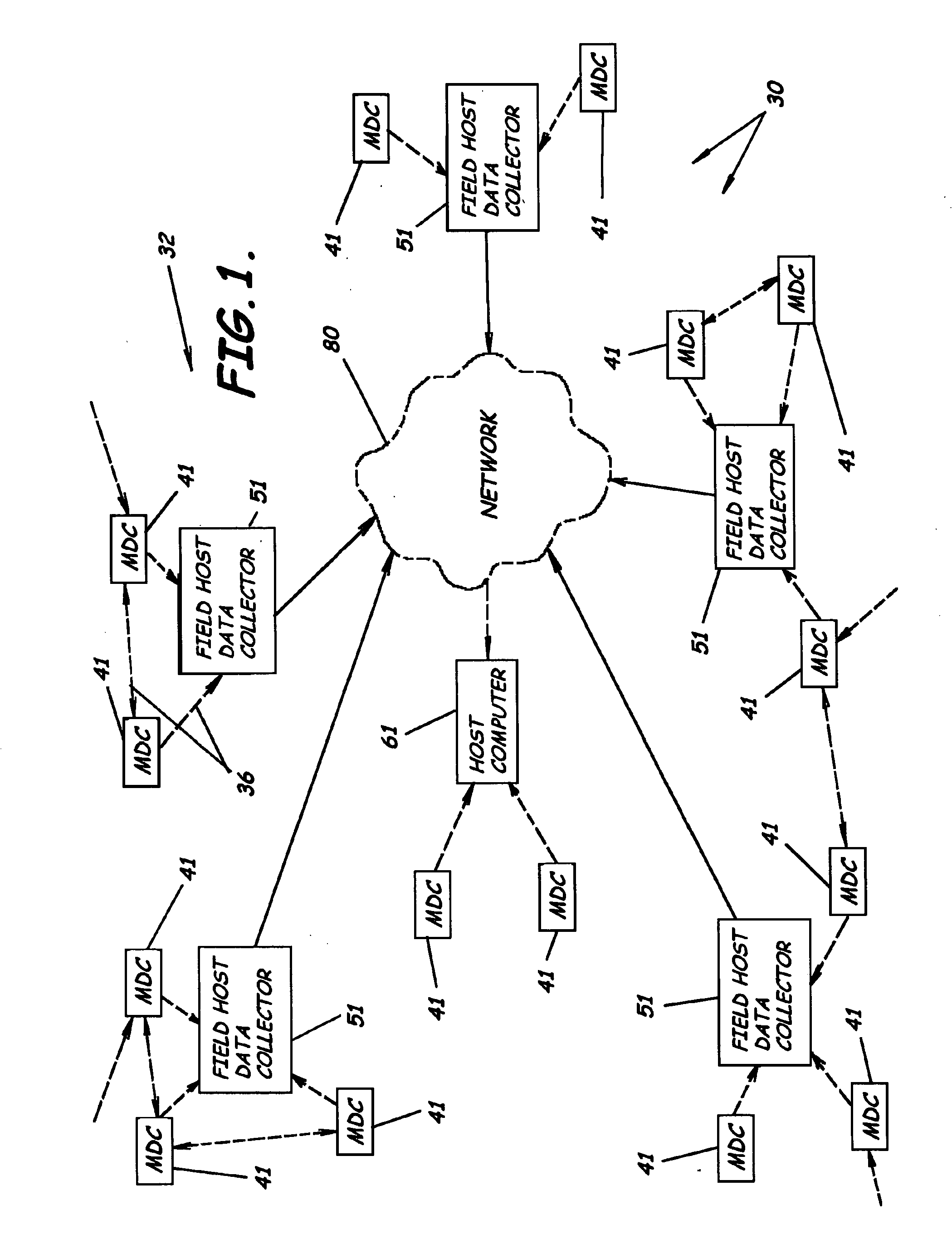Utility companies and municipalities for many years have been burdened with the labor intensive and cumbersome task of manually collecting meter readings, managing data from the field into the accounting area, and managing the billing and collection of invoices.
This process is costly, is
time consuming, and can involve various risks to personnel involved in manually collecting meter data.
The process involves labor, motorized transportation, and numerous employee overhead-related costs.
Manually reading the meters often results in numerous other expenses including those related to
human error.
For example, a high bill caused by an incorrect manual read or estimated read often motivates customers to pay later, resulting in increased working capital requirements and corresponding expenses for the utility.
Additionally, the utility has to
handle the customer complaints (a call center cost) and may have to read the meter again to verify the error.
As the complaint progresses, the utility faces administrative costs associated with routing and
processing the complaint from the call center to the meter department.
An additional cost includes the potential loss of a customer who, even after resolution, feels the process was such an excessive burden as to prompt the customer to switch utility providers.
This approach, however, still requires the manual visit to each meter location and time downloading the data to the
billing system.
Also, the data is transferred from the mobile
receiver to the
database, which again reduces manpower and data handling.
Realization difficulties can include prohibitive capital costs, i.e., vehicles, and
software and hardware requirements, and access to a reliable and cost-
effective power for the individual radio
transmitter in the individual meters.
When utilities such as gas,
electricity, or water are most expensive to the customer, they are also correspondingly most expensive to the
utility company.
This approach, however, can require a complicated infrastructure to be installed.
Power lines operate as very large antennas and can receive a large amount of
noise.
These filters can be very expensive.
Another problem with expanding the use of control systems technology to such distributed systems are the costs associated with the sensor-
actuator infrastructure required to monitor and control functions within such systems.
Not only is there the expense associated with developing and installing appropriate sensors and actuators, but there is the added expense of connecting functional sensors and controllers with the local controller and the cost of the local controller.
This methodology is also quite intrusive as the cables must be run to physically interconnect the various nodes in the network.
In addition to the high cost of installation, however, such a system is not useable in areas without access to a cable system.
Moreover, networks that are interconnected with cables are subject to physical disruption of the cables.
These conventional
wireless networks, however, have limitations.
For example, because these conventional
wireless networks generally have a point-to-point loop configuration, when one node is disabled, the integrity of the entire network can be affected.
Moreover, if the master node of such a conventional network is disabled, the network can become isolated.
Building, launching and maintaining a fleet of satellites, however, is very expensive.
Because systems having sufficient range normally are subject to regulations and licensing requirements that are prohibitively expensive, centralized
wireless control systems for locally distributed devices using RF transmitters have not been widely utilized.
Also, systems that are sufficiently powerful to be used in widely distributed installations are unnecessarily expensive in smaller installations.
Additionally, there is limited availability of RF carrier frequencies and potential interference with other nearby systems that might be operational.
Although such automated meter reading servers may address some meter
data management concerns, these systems still fail to address communication concerns set forth above with respect to collecting billing or
usage data and transmitting the data to a control center having such an automated meter reading
server.
 Login to View More
Login to View More  Login to View More
Login to View More 


